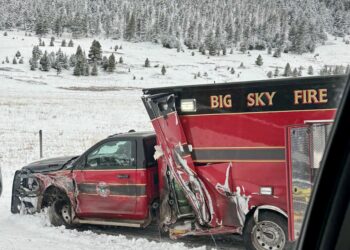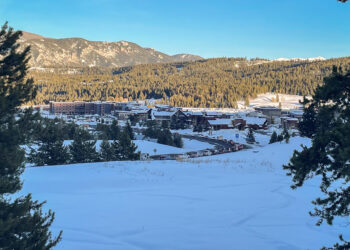By David Tucker Gallatin River Task Force
If you live in Big Sky, water is likely on your mind. Whether you ski or fly fish, raft or trail run, water is the foundation upon which our entire community—and every community, for that matter—is built. Here in the upper Gallatin watershed, water is of particularly critical importance because in order to have enough of it, we need to think strategically about how we use it, and in order for the Gallatin River to remain healthy, we need to use less of it.
To highlight that importance, the Gallatin River Task Force hosted the Headwaters Alliance Symposium at the Wilson Hotel in Town Center on Dec. 9. As much of Montana remains in critical drought conditions and Big Sky continues to grapple with rapid development, the gathering couldn’t have been timelier.
“It has been a while since we’ve been able to gather as a community and dig deeper on water conservation and river protection topics,” said Kristin Gardner, chief executive and science officer at the task force. “It’s no secret that there are water quality and quantity challenges in our community, but events like this help us communicate the important work that’s being done to protect the river as the community continues growing.”
That important work includes a variety of conservation and restoration projects being led by the task force, and the symposium showcased everything from expanding wastewater reuse options to the importance of trout-friendly landscaping.
“We don’t have a magic silver bullet that we can use to fix all of our challenges here,” Gardner said. “There’s no single problem, but rather many challenges, all exacerbated by a changing climate.”
The symposium marked a long-overdue rendezvous of the Headwaters Alliance, a diverse collection of stakeholders led by the task force and focused on water conservation and river restoration. Members include other nonprofits, government agencies, local utilities and private businesses, all with a common goal of implementing a sustainable water-management plan that protects ecological systems while supporting adequate household supply and better wastewater treatment and reuse.
The diversity of the stakeholders was evident in the list of the symposium’s speakers, which included specialists from the Bureau of Mines and Geology, environmental managers from local resorts and recreation planners from the U.S. Forest Service, to name a few. This broad spectrum of perspectives speaks to the collaborative approach that will be necessary to ensure the long-term health of the watershed, and bringing people into the conversation has always been central to the task force’s river protection mission.
“We can’t solve these problems on our own,” Gardner said, “so it’s always encouraging to see the broad engagement from the community. To protect the Gallatin, we’ll need to leverage everyone’s knowledge and resources.”
As the year comes to a close, it’s clear that collaboration is more necessary than ever. The mountain snowpack sits at 75 percent of normal, and 100 percent of people in Gallatin County remain in drought conditions. What we do with water will be ever more important as these scenarios become our new normal.













